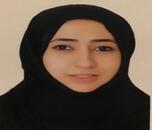Scientific Program
Keynote Session:
Oral Session 1:
- Nephrology | Diabetic Nephropathy | Paediatric Nephrology | Renal Nutrition | Kidney Diseases
Title: Autosomal Dominant Adult Polycystic Kidney Disease
Biography:
Hassa Al Zaabi , MD, MSc Nephrology Medicine , is a specialist nephrologist at Zayed Military Hospital, Abu Dhabi, UAE .Al Zaabi started her medical education in The Arabian Gulf University in the Kingdom of Bahrain. Following her undergraduate education , Al Zaabi continued her postgraduate training in nephrology at Zayed Military Hospital. During her postgraduate training , Alzaabi obtained a Masters degree in Nephrology Medicine from University of Sheffield after training for a year at Sheffield Kidney Institute in Sheffield , UK.
Al Zaabi also worked as a Deputy Medical Director at Zayed Military Hospital for over 3 years and Head of Nephrology for a year .
Currently, Al Zaabi is working at Zayed Military Hospital at the clinic and dialysis unit and also works at the Ministry of Defense as a Head of Delivery Management Section . Her interests are Chronic Kidney Disease and End Stage Renal Disease.
Abstract:
Autosomal dominant polycystic kidney disease (ADPKD) is a genetic disorder characterized by the growth of numerous cysts in the kidneys. Symptoms vary in severity and age of onset, but usually develop between the ages of 30 and 40.
ADPKD is a progressive disease and symptoms tend to get worse over time. The most common symptoms are kidney cysts, pain in the back and the sides and headaches. Other symptoms include liver and pancreatic cysts, urinary tract infections, abnormal heart valves, high blood pressure, kidney stones, and brain aneurysms.
ADPKD is most often caused by changes in the PKD1 and PKD2 genes, and less often by changes in the GANAB and DNAJB11 genes.It is inherited in a dominant pattern.
The diagnosis of ADPKD should be suspected in patients with clinical features mentioned and in those with a family history of ADPKD.
Preferred method — Mayo classification system, which categorizes patients into five prognostic classes from the lowest to the highest risk for disease progression (classes 1A, 1B, 1C, 1D, and 1E).
The Mayo classification requires demographic data such as the patient's age, height, and TKV.
The TKV can be calculated using a TKV calculator available online using a single representative coronal image .
Treatment for ADPKD involves managing the symptoms and slowing disease progression. The most serious complication of ADPKD is kidney disease and kidney failure. ADPKD is the most common inherited disorder of the kidneys. Tolvaptan is a vasopressin V2-receptor (V2R) antagonist with proven beneficial results in ADPKD.
Title: Paediatric Enuresis: From Bench to Bedside
Biography:
Kanav Anand is a Consultant Pediatric Nephrologist at Sir Ganga Ram Hospital located in Delhi, India.
Abstract:
Bedwetting – also called enuresis is defined as wetting during sleep, in a child over five years, in the absence of neurological or structural problems affecting the bladder. The International Children's Continence Society (ICCS) defined nocturnal enuresis as both a symptom and a condition of intermittent incontinence that occurs during periods of sleep. According to American Psychiatric Association, it must be clinically significant as manifested either by a frequency of twice a week for at least 3 consecutive months or the presence of clinically significant distress or impairment in social, academic (occupational) or other important areas of functioning. The worldwide prevalence of enuresis among children aged 6–12 years is 1.4%–28%. Some of the risk factors for enuresis are lower socioeconomic class, family history of enuresis, living with single parent, step parents, conflicts in family, parents with health problems and poor scholastic performance. Moreover enuretic children may have a history of birth asphyxia, caesarean birth, low birth weight and absence of breastfeeding. Some key factors that play role in bedwetting are developmental delay, genetic predisposition, abnormal bladder reservoir function, abnormal circadian rhythm of antidiuretic hormone (AVP) secretion and bladder detrusor/sphincter dysfunction. Regarding treatment, treatment of coexisting conditions should occur simultaneously with treatment of enuresis. The efficacy and safety of different treatments for monosymptomatic nocturnal enuresis, including standard therapies, simple behavioural interventions, complex behavioural interventions, alarm therapy, desmopressin and other drugs, biofeedback therapy, electrical stimulation, acupuncture, herbal medicines, massage, and so on may vary in terms of efficacy & safety. Alarm is effective single therapy with lower relapse rate. But children with Nocturnal Polyuria (NP) are most likely to benefit from desmopressin since lower nocturnal vasopressin levels have been demonstrated in a large percentage of patients, making substitution with desmopressin, a synthetic analogue of AVP, a rational first-line treatment for children with Mono-symptomatic Nocturnal Enuresis (MNE) and NP. If untreated, bedwetting can persist into adulthood and the negative impact of bedwetting on child and family is considerable. Effective treatment can alleviate this burden, allowing the child to enjoy normal social and emotional development. Early treatment (from 5–6 years) can prevent prolonged distress during formative years and should be initiated whenever the child is ready/wishes to be dry, especially if enuresis is severe (spontaneous resolution unlikely).
Title: Preventive Nephrology
Biography:
Dr.Mohamed Alsaid Abdellatif is a Senior Specialist of nephrology in the Ministry of Health situated in Damietta .
Abstract:
• 27 year-old female • Primi gravida. • Delivered by C.S-spinal anasethia> full term baby • 10 hours later, the patient returned to home, she complained from headache. • The obstetrician ordered to give fluids
Day 1 • Severe Headache, malaise, lethargy and dizziness. • The family called the physician . • No bleeding • Fluids, analgesics, assurance
Day 2 • The patient became dyspneic . • The obstetrician asked the family to consult chest physician. The chest physician ordered CBC which revealed leukocytosis and HB 9 g/dl. • Blood pressure : 100/70 mmHg ---- • He called the obstetrician and started broad spectrum antibiotic
Day 3 • The patient became feverish • The obstetrician accompanied the patient to the emergency hospital . • They spent 10 hours in the hospital . • CBC revealed leukocytosis.us revealed small collection 5*5 • The patient returned to her locality Diagnosis :infected collection Treatment: iv antibiotics
Day 4 Her level of consciousness is deteriorating. She was referred to ICU Oliguric …..90/60 mmhg Creatinine 5 mg/dl K 6.5 m.mol/l PH 7.1 HCO3 15…. Nephrology consultation.
Title: Study of left ventricle hypertrophy, dilatation and ejection fraction changes before and after kidney transplantation.
Biography:
Dr.Mohamed Abdelnasr Abdelkareem Abdelfadeel works at Internal Medicine and Cardiology departments as a Faculty of Medicine in the Alexandria University located in Alexandria, Egypt.
Abstract:
Background: End-stage renal disease (ESRD) population are at risk of serious complications with the cardiovascular one being the commonest. Left ventricular hypertrophy (LVH) is the most frequent cardiac finding observed in this group of patients. It is mainly attributed to chronic pressure and volume overload. Renal transplantation is the best renal replacement modality offered to these patients with an expected improvement in cardiovascular related complications.
Aim of the work: We aimed to study the changes in left ventricle hypertrophy, dilatation and ejection fraction before and after kidney transplantation
Methods: This cross-sectional study included 30 renal transplant recipients with a mean age of (34.13 ± 11.80) years. Echocardiographic study was done to all patients before the transplant operation and 6-12 months after transplantation. In the studied sample, 80% of the patients were known to be hypertensive and 16.7% had diabetes mellitus. Patients with a reported history of post-transplant rejection episodes or heart failure were excluded from the study. All patients were on hemodialysis before transplantation and the mean pre-transplant dialysis duration was (15.83 ± 13.23) months while the mean post renal transplant duration was (10.33 ± 1.95) months. All patients received living kidney donation and were subjected to the same post-transplant immunosuppressive drug regimen.
Results: The mean left ventricle ejection fraction (EF) before and after renal transplantation was (59.70 ± 7.86) and (68.82 ± 7.93), respectively (P <0.001). The mean left ventricle end diastolic dimension (LVEDD) was (55.27 ± 7.77) pre-transplant which was improved to (49.57 ± 6.49) post-transplant with a P value (P <0.001), similarly the mean left ventricle end-systolic dimension (LVESD) was (37.11 ± 7.40) pre-transplant which improved to (30.40 ± 6.07) post-transplant with a P value (P <0.001) and the mean left ventricular mass index (LVMI) showed a significant improvement from (144.1 ± 44.15) pre-transplant into (115.1 ± 38.79) post-transplant with a P value (P =0.002).
Conclusion: According to the results of this study the renal transplantation could improve left ventricle parameters in patients with end stage renal disease.
Title: Hypertension After Kidney Transplantation: Prevalence and Predictive Factors
Biography:
Rim ben Dhia is working as a doctor in the nephrology department at the la rabta hospital in the city Tunis in Tunisia.
Abstract:
The prevalence of hypertension in kidney transplant patients ranges from 70 % to 90%.Cardiovascular morbidity and mortality also decreased allograft survival are important consequences of inadequate control of hypertension.
It’s a retrospective descriptive cohort study including 32 kidney transplant patients during 48 monthes at Nephrology departement in La Rabta Hospital in Tunis during the periode from the first of January 2015 to the 31 December 2018. One year after transplantation 22 kidney transplant recipients have hypertension (68,7%).Prevalence of hypertension when renal transplantation was performed was 84%.The middel âge of our patients was 31,81±8,3 years. The gender ratio was 1,9.Renal replacement therapy was performed by hemodialysis in 25 cases (78%) and 7 patients (22%) by peritoneal dialysis.
Living kidney donor transplant in 94% of cases with femal gender in 65 %.The middel âge of kidney donor was 44,38 year old±10,9years.
One year after transplantation 5 patients had develop diabetes (15%), post transplant dyslipidemia occurs in 26 cases (81%), anemia in 2 cases (6%).
A comparative study was performed between two groups :
Group A :Hypertension in kidney transplant recipients after one year (n=22)
Group B : patients who did not develop hypertension after kidney transplantation (n=10).
Factors significantly associated with hypertension after kidney transplant were :
- Age of kidney recipient more than 50 year old before transplantation.
- Dyslipidemia before transplantation
- Overweight and obesity
- Creatinine one year after kidney transplant ≥15mg/dl.
The etiology of post transplant hypertension is multifactorial :Native kidneys, immunosuppressive therapy, renal graft artery stenosis and chronic allograft nephropathy are the most common causes.
Title: Pregnancy in hemodialysis Patient: A Successful Case from least developed area and management guideline
Biography:
Rafiqul Hasan is working as an assistant professor at Cox'sbazar Medical College. He has completed his degree in MBBS, MCPS, FCPS, MD respectively from Dhaka in Bangladesh.
Abstract:
Pregnancy is rare in haemodialysis (HD) patient as fertility is markedly reduced in these patients due to multiple factors. Successful pregnancy outcome is further difficult in these patients with poor socioeconomic background, where proper take care of the patient is impossible. Providing intensive HD is a common treatment approach when dialyzing a pregnant woman. Nephrologists are now providing 4–4.5 h of HD 6 days a week. There is a trend toward better live birthrates with more intense HD. I report here one case of successful pregnancy in End Stage Renal Disease (ESRD) on maintenance HD in least developed area of Bangladesh. In this case we find a successful pregnancy outcome where following of current recommendations of management is not possible.
Title: Acute Kidney Injury in COVID
Biography:
Brig. Gen.Mamun Mostafi is working as a Professor in the Department of Nephrology in the Gonoshasthaya Somaj Vittik Medical College and & Head of the nephrology department at the Gonoshasthaya Nagar Hospital, Dhanmondi, Dhaka, Bangladesh. He was the Former Chief Physician & Head of Nephrology, Bangladesh Army.
Abstract:
TBA
Title: Diabetic kidney disease: Challenges, advances, and opportunities
Biography:
Sherif Mohamed Saleh is working as an Assistant Lecturer of Internal Medicine at the College of Dentistry in Pharos University in Alexandria, Egypt.
Abstract:
Background: Diabetic kidney disease (DKD) is the most com-mon cause of the end-stage renal disease (ESRD). Regardless of intensive treatments with hyperglycemic control, blood pressure control, and the use of renin-angiotensin system blockades, the prevalence of DKD remains high. Recent stud- ies suggest that the spectrum of DKD has been changed and many progresses have been made to develop new treat-ments for DKD. Therefore, it is time to perform a systemic review on the new developments in the field of DKD.
Summary: Although the classic clinical presentation of DKD is characterized by a slow progression from microalbuminuria to macroalbuminuria and by a hyperfiltration at the early stage and progressive decline of renal function at the late stage, recent epidemiological studies suggest that DKD pa-tients have a variety of clinical presentations and progres-sion rates to ESRD. Some DKD patients have a decline in renal function without albuminuria but display prominent vascu-lar and interstitial fibrosis on renal histology. DKD patients are more susceptible to acute kidney injury, which might contribute to the interstitial fibrosis. A large portion of type 2 diabetic patients with albuminuria could have overlapping nondiabetic glomerular disease, and therefore, kidney biopsy is required for differential diagnosis for these patients. Only a small portion of DKD patients eventually progress to end-stage renal failure. However, we do not have sensitive and specific biomarkers to identify these high-risk patients. Genetic factors that have a strong association with DKD pro- gression have not been identified yet. A combination of cir-culating tumor necrosis factor receptor (TNFR)1, TNFR2, and kidney injury molecular 1 provides predictive value for DKD progression. Artificial intelligence could enhance the predic- tive values for DKD progression by combining the clinical parameters and biological markers. Sodium-glucose co- transporter-2 inhibitors should be added to the new stan- dard care of DKD patients.
Key Messages: Over last years, our under- standing of DKD has been much improved and new treatments to halt the progression of DKD are coming. However, better diagnostic tools, predictive markers, and treatment options are still urgently needed to help us to manage better.
Title: Benefit of isonatric dialysis patients over 70 years
Biography:
Goumri Nabila has completed the Nephrology Internal Residency at the age of 28years from Algiers Medecin, nephrologist in practice from Rodez Hospital Toulouse University and Nephrologist TOURS CHU (2016-2017), LOUIS PASTEUR Chartres ( 2017-2018).
Abstract:
Intradialytic hypotension (IDH) is still a major medicalproblem for hemodialysis patients over 70 years. isonatric dialysis has been an alternative able to reduce incidence of IDH and could help to improve hemodynamic stability in patients with cardiovascular comorbidities.
Method: 24 patients were included in prospective study ( jan - april 2016) , we evaluated the impact of isonatric HD on cardiovascular stability during 24 sessions compared to conventional HD 12 sessions.
Results: IDH 40,7% (Iso HD) VS 27,1% (conventional HD) P 0,005, the predialytic blood pressure pre HD PAS decrease from 12mmhg the differential between two groups P 0,014, the diastolic BP decrease from 3± 12 mmhg P=0,073), the dry weight did not vary significantly during the study 1.57±0,63 to 1.24±0,43, the number of intolerance symptoms was not significantly different except for vomiting 79/216 sessions (Iso HD) vs 134/432 (HD conventional) P 0,005, cramps 36/216 vs 24/432 sessions , nausea 67/216 vs 117/432, how we can see isonatric dialysis has an implication for hemodialysis tolerance also with patients over 70 years so it can be an option to management intradialytic hypotension we should think to revisiting prescription of Na dialysate.
Title: From Autosomal Recessive Renal Tubular Dysgenesis to The Renin-Angiotensin System
Biography:
Marie Claire Gubler Gribouval performed the genetic analysis of the RAS genes in the Laboratory of Hereditary Kidney Diseases (INSERM U 1163) headed by C Antignac. A Michaud performed the in vitro expression of the mutations in the laboratory headed by P Corvol. MC Gubler is the pathologist at the origin of the work.
Abstract:
Renal tubular dysgenesis (RTD) is a severe disorder of renal development characterized by early onset foetal anuria leading to persistent oligohydramnios with the resulting sequence of malformations including lung hypoplasia. The usual issue is foetal or post-natal death due to hypotension, anuria and respiratory distress.Absence of differentiated proximal tubules is the hallmark of the disease. Familial cases, with an autosomal recessive inheritance, are frequent. Histological analysis of renal tissues directed us toward the renin-angiotensin system (RAS). Accordingly, genetic investigation confirmed that hereditary RDT was linked to mutations in the AGT, REN, ACE and AGTR1 genes. The absence of functional RAS leads to foetal and neonatal hypotension, renal hypoperfusion, and the development of anuria and tubular dysgenesis. Interestingly, DTR is also observed in foetuses exposed to RAS blockers, and
in various pathological conditions leading to chronic renal hypoperfusion such as severe cardiopathies, hepatic failure or in the donor foetus in the twin-to-twin transfusion syndrome. By expressing the mutations in cellular models, progresses in the knowledge of the structure-function relationship of the proteins have been obtained notably by showing that the defective misfolded proteins undergo either intracellular accumulation and retention or rapid degradation. These studies also confirmed that ACE has to be anchored in the plasma membrane to be active. The identification of the disease on the basis of precise clinical and histological analyses and the characterization of the genetic defects allow genetic counseling and early prenatal diagnosis.











